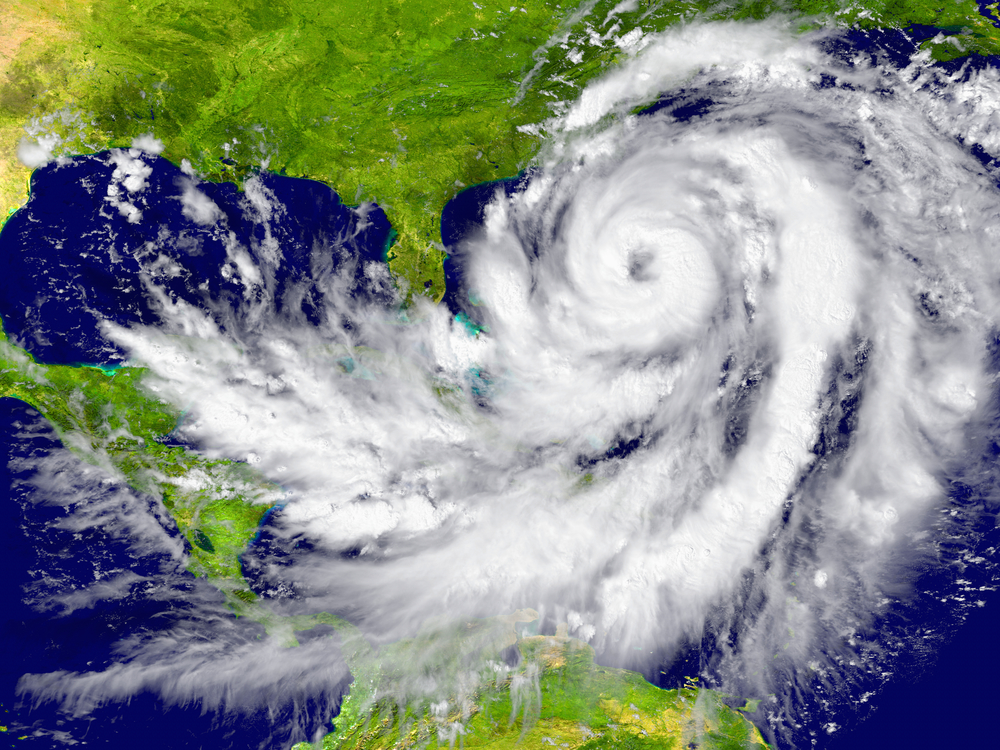Experts Predict 12-14 Storms For 2019 Atlantic Hurricane Season
Aug 15, 2019
Experts with AccuWeather and the National Oceanic and Atmospheric Administration (NOAA) agree that the 2019 Atlantic Hurricane Season will be near to slightly above normal. NOAA is predicting nine to 15 name storms while AccuWeather forecasts 12 to 14 storms.
Named storms require wind speeds of 39 mph or higher. NOAA forecasts that four to eight of those storms could become hurricanes, which means that winds are 74 mph or higher. And that two to four will be major storms in the category of 3, 4 or 5; with wind speeds at 111 mph or higher.
An average hurricane season produces 12 named storms, of which six become hurricanes and three of the six become major hurricanes.
The predictions are based on analyzing past years that have weather that is similar to current and projected patterns. The patterns are based on the El Niño or on a combination of weather patterns that occur over other parts of the Earth that can strongly influence current or future weather in the Atlantic basin.
The current El Niño is expected to continue through the summer, which includes the most active time of the hurricane season -- August, September and October. The current El Niño is causing frequent wind shear that limits tropical cyclone development and intensification.
If the current El Niño continues or strengthens, then the number of tropical storms and hurricanes will be near or below normal. If the El Niño weakens and goes neutral, then the number of tropical storms and hurricanes could be higher than normal, noted AccuWeather Atlantic Hurricane expert Dan Kottlowski.
The hurricane season of 1969 shows the strongest similarity to the current pattern. During that season, Hurricane Camille hit the Gulf coastline. Other years with similar conditions have had hurricanes occur up and down the coast extending west from the Florida panhandle and the mid-Atlantic coast west to Brownsville, Texas.
The predictions are for overall seasonal activity and is not a landfall forecast.
Colorado State University, which pioneered hurricane season predictions, is forecasting 13 named storms, five to become hurricanes and two to be major storms.
In 2018, the Atlantic Hurricane Season had 15 named storms. Eight became hurricanes. Although last year’s season produced Hurricane Florence and Michael, overall it wasn’t as active as the 2017 season.
The National Hurricane Center has come up with the official names for upcoming Atlantic hurricanes. They include:
- Andrea
- Barry
- Chantal
- Dorian
- Erin
- Fernand
- Gabrielle
- Humberto
- Imelda
- Jerry
- Karen
- Lorenzo
- Melissa
- Nestor
- Olga
- Pablo
- Rebekah
- Sebastien
- Tanya
- Van
- Wendy
The 2019 Atlantic Hurricane Season has already begun with a subtropical storm that formed south of Bermuda on May 20, but fizzled out less than 24 hours later. The storm was assigned the name Andrea.
Although hurricane season predictions do not include where future hurricanes will make landfall, we pretty much know what sections of the United States are vulnerable to these storms. Residents of those areas are encouraged to prepare.
There are things you can do to storm proof your home if you live in a vulnerable area. For example, damage resulting from a hurricane often occurs when trees fall. Homeowners are encouraged to trim trees or remove damaged trees and limbs as a precaution to reduce the risk of damage.
It is also suggested that homeowners clean rain gutters and reinforce the roof, doors and windows if needed.
Homeowners, who live in particularly vulnerable areas like Florida, Texas, Louisiana, Mississippi, Alabama, and North and South Carolina, have been known to construct a “safe room” as part of their home. A “safe room” is designed and constructed to withstand hurricane forced winds. The Federal Emergency Management Agency has published a pamphlet called, Taking Shelter from the Storm: Building a Safe Room for Your Home or Small Business. It is available as a pdf download from FEMA’s website.
It is also advised that residents of hurricane vulnerable regions prepare a supply of emergency items and place them in multiple locations throughout their home. A basic disaster kit should include:
- A gallon of water per person per day for at least three days
- Three day supply of non-perishable food
- Battery-powered or hand-crank radio
- Flashlight with extra batteries
- First air kit
- Whistle to summon help
- Dust mask
- Wet wipes, garbage cans and plastic ties for sanitation
- Wrench or pliers for tuning off broken pipes
- A can opener for food
- Cellphone and cellphone chargers
People who may want to stay home and ride out the storm are encouraged to acquire a power generator. It will provide your home with power during storm-caused power outages.
APElectric, located in Pleasant Prairie, Wisconsin. offers a wide range of generators on its website.The products are made by some of the world’s greatest generation manufacturers including Cummins, Westinghouse, Kohler, Briggs & Stratton, Generac, and Guardian. The website also includes a generator sizing calculator and offers information on how to select the proper generator for your situation.
